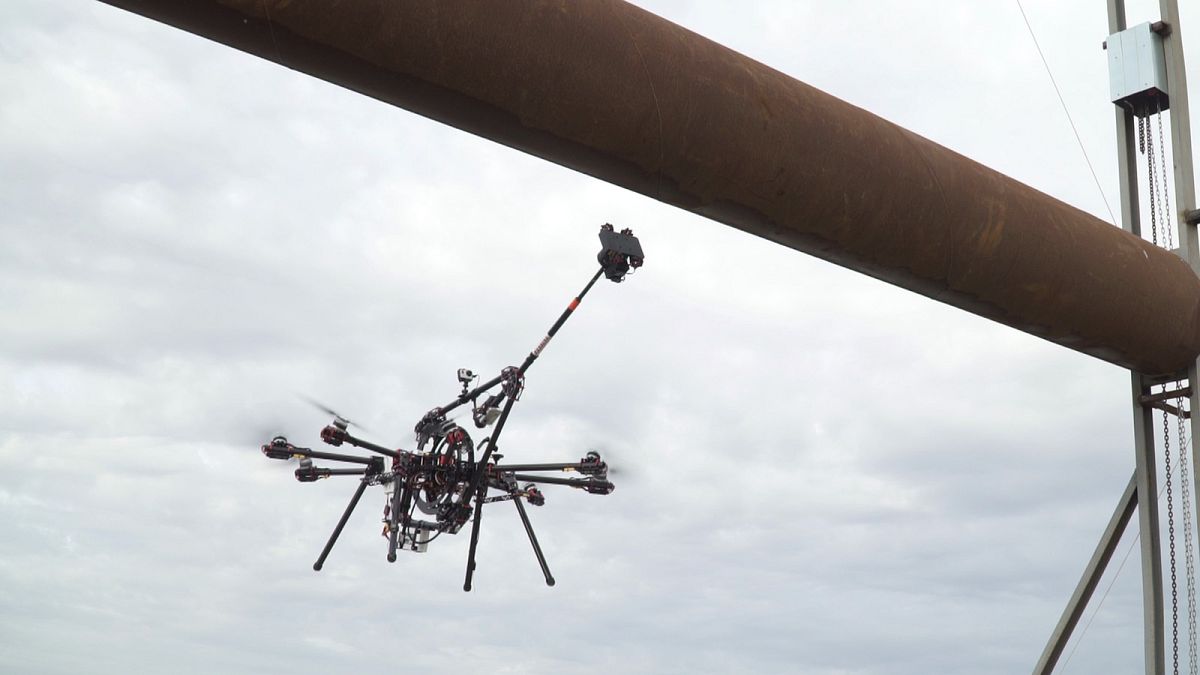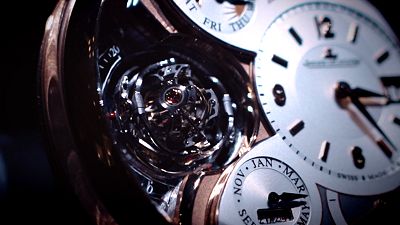A new drone is making a buzz across Europe: its technology means that risky industrial inspections can become safer and more cost-effective.
A new drone is making a buzz across Europe: its technology means that risky industrial inspections can become safer and more cost-effective.
What makes this particular drone the first of its kind is its sensitive telescopic arm. Designed by the Center for Advanced Aerospace Technologies (CATEC) in Seville, the semi-autonomous drone can lift instruments and press them against structures in just the right way to check their integrity.
“With these ultrasonic instruments we can measure the thickness of the pipe, as you can see,” said Miguel Ángel Trujillo, Avionics and systems research engineer, CATEC.
“We can also detect various kinds of defects or corrosion. These sensors need to remain in contact with the pipe to provide us this kind of information.”
Developed within a European research project AEROARMS, this technology is aimed for the commercial market. So far countless pipelines at industrial facilities, in particular in the oil and gas sector, need to be inspected manually. It is a slow, expensive and dangerous job.
“This drone will allow to carry out these tasks at a lower cost, saving a typical refinery €700,000 per year,” said Aníbal Ollero, AEROARMS project coordinator; Professor of robotics, University of Sevilla; Scientific advisor, CATEC.
“The inspections will be conducted 10 times faster, and without height-related work accidents.”
This project was selected among the 20 finalists of this year’s Innovation Radar Prize – a European Commission initiative to identify EU-funded innovations with high market potential. At the final in Budapest, all 20 teams pitched their projects to the expert panel.
“It’s very important that taxpayers know that their money is actually very productive, that it leads to innovation, it leads to products,” Linda Corugedo Steneberg,Director, Policy strategy and outreach, DG CNECT told Euronews.
“It’s one thing to have a brilliant idea in the lab, but as we all know it’s another thing to bring it forward, so that it can get into the market. And it’s this combination that we’re looking for when we award the prize.”
“They were convincing,” said Teresa Cunha, Innovation Radar prize jury member. “We didn’t focus at the fact that it was a drone — we were focusing at the fact that they’re answering a market need. And they could demonstrate that they could save money and they could save lives, and make it faster, so that was the reason why we ended up by choosing them.”
The prize highlights the technology: after the completion of the research project, the developers are planning to attract private investments to turn their prototype into a commercial product.
“The market is very large: only in Europe it’s 600 million euros per year, and the number of accidents is at the order of 5000,” Aníbal Ollero said.



